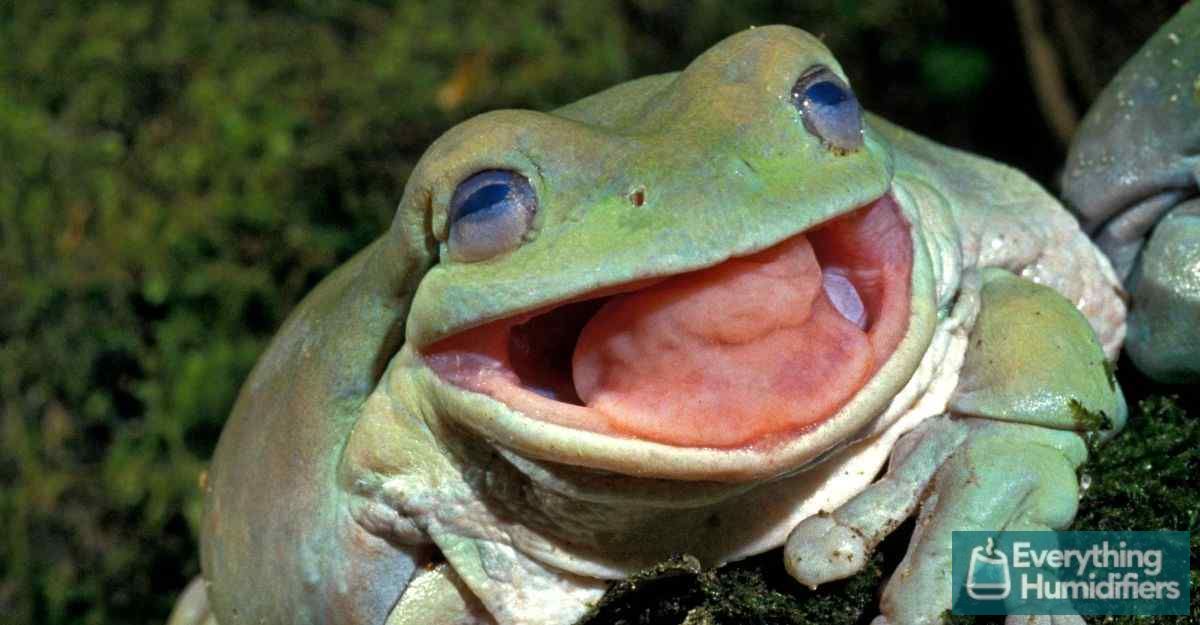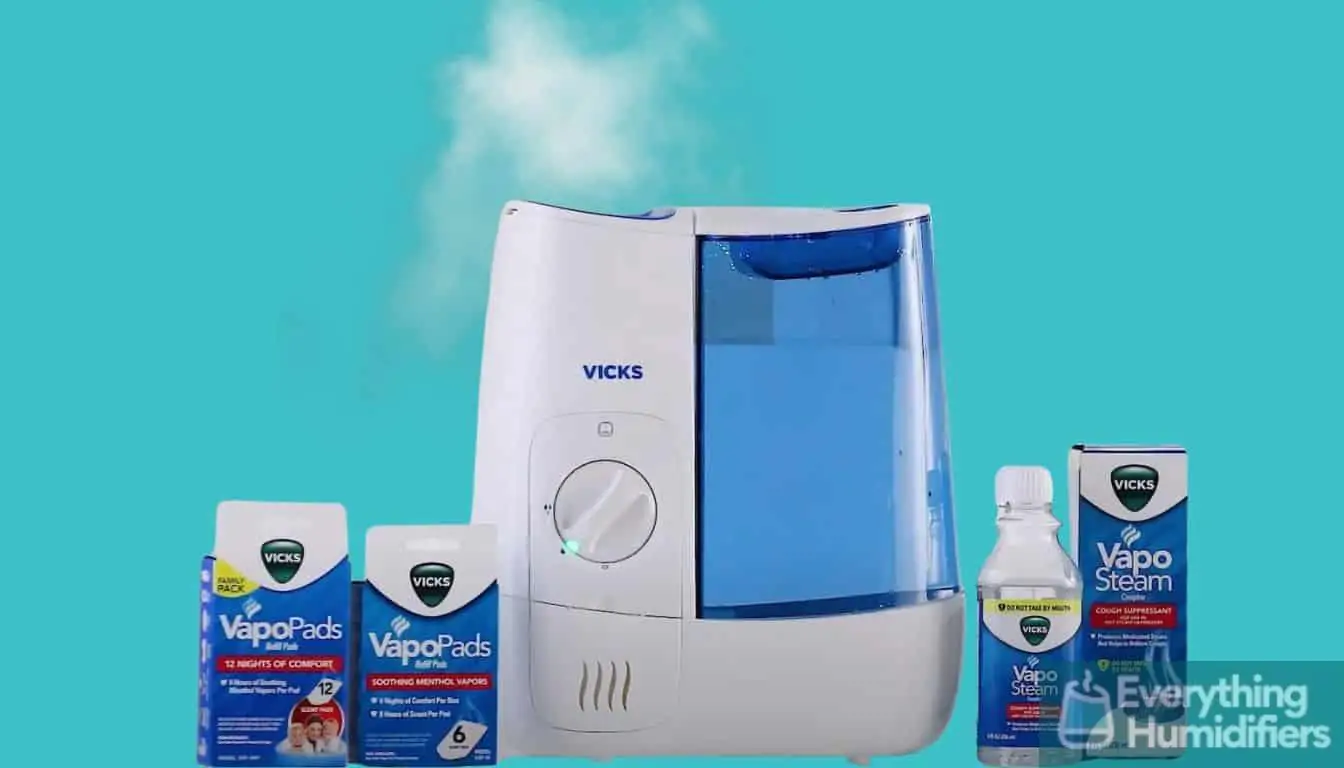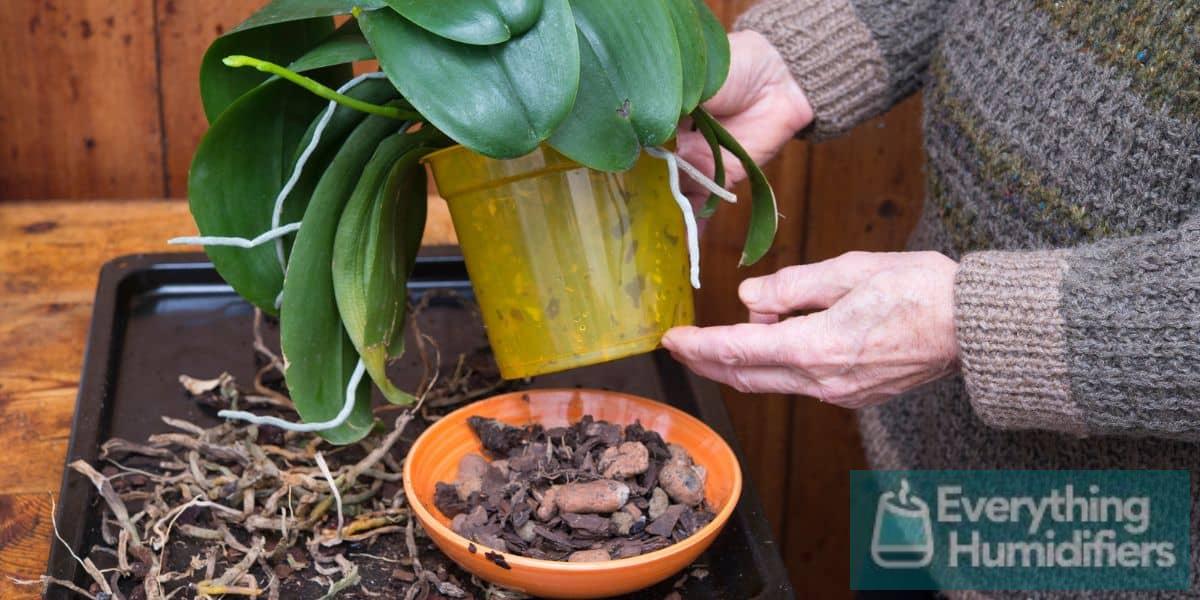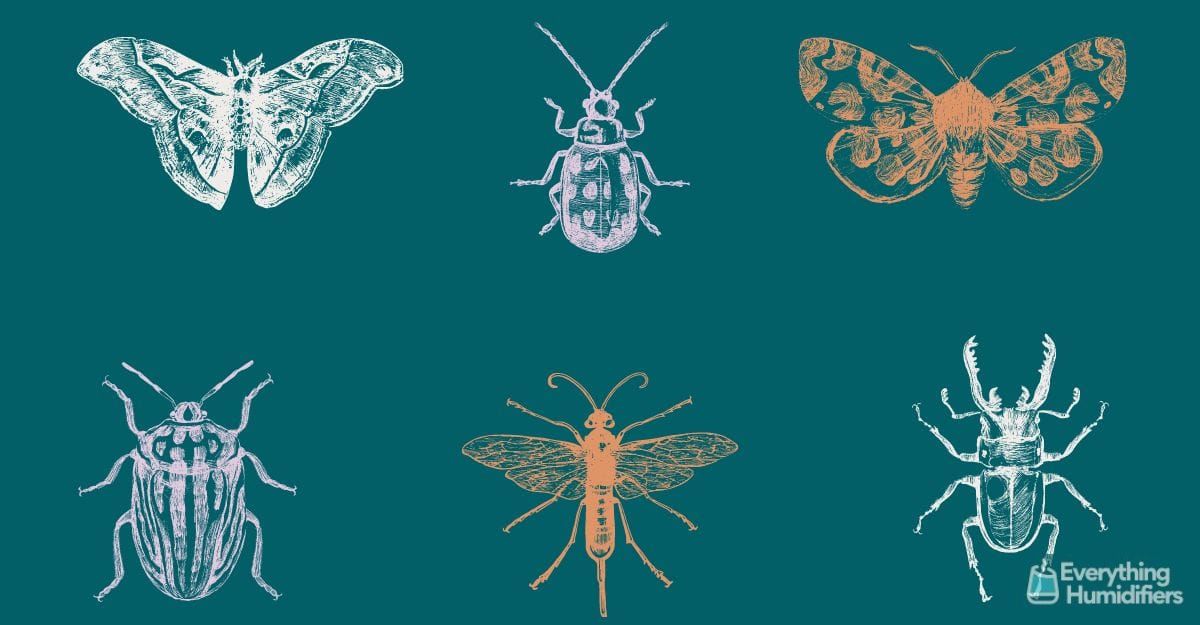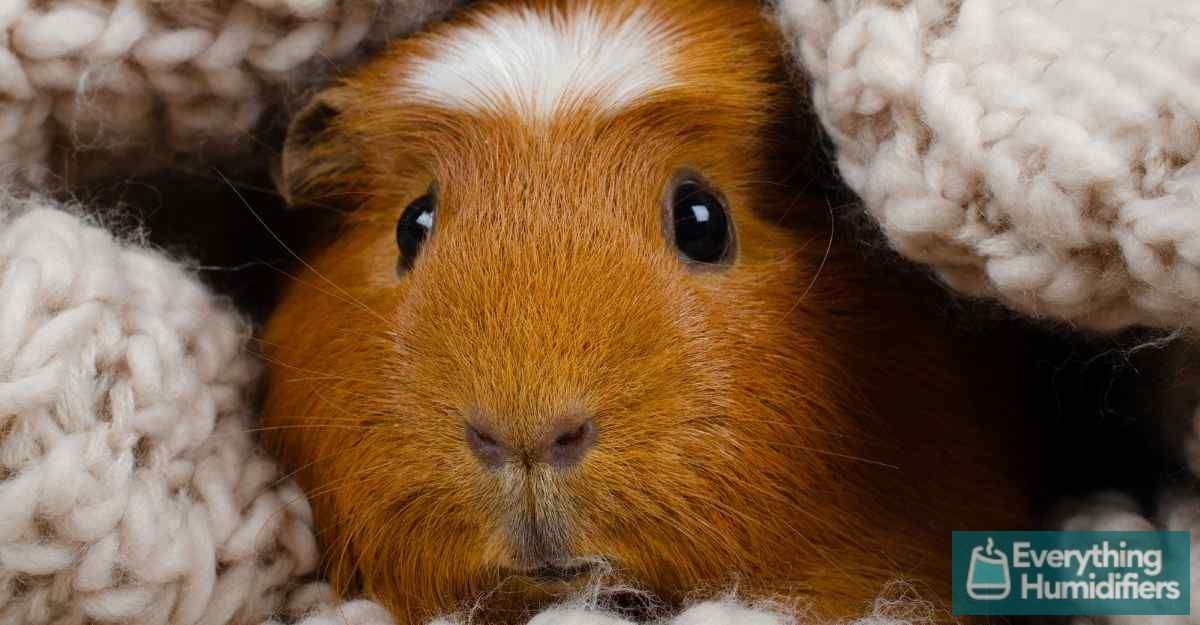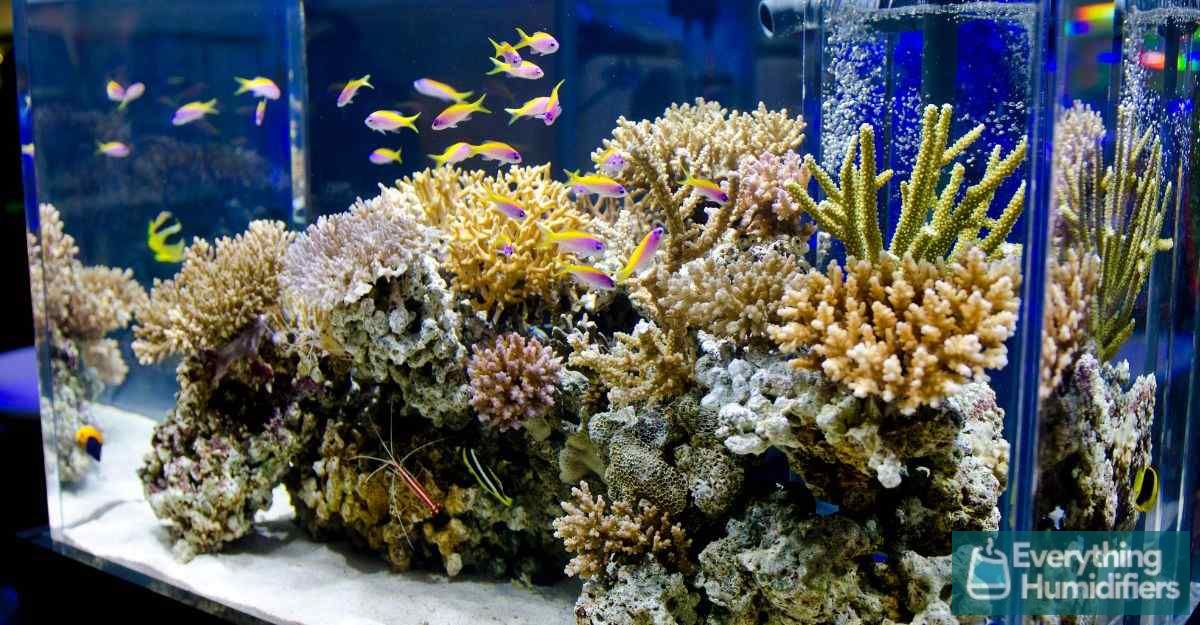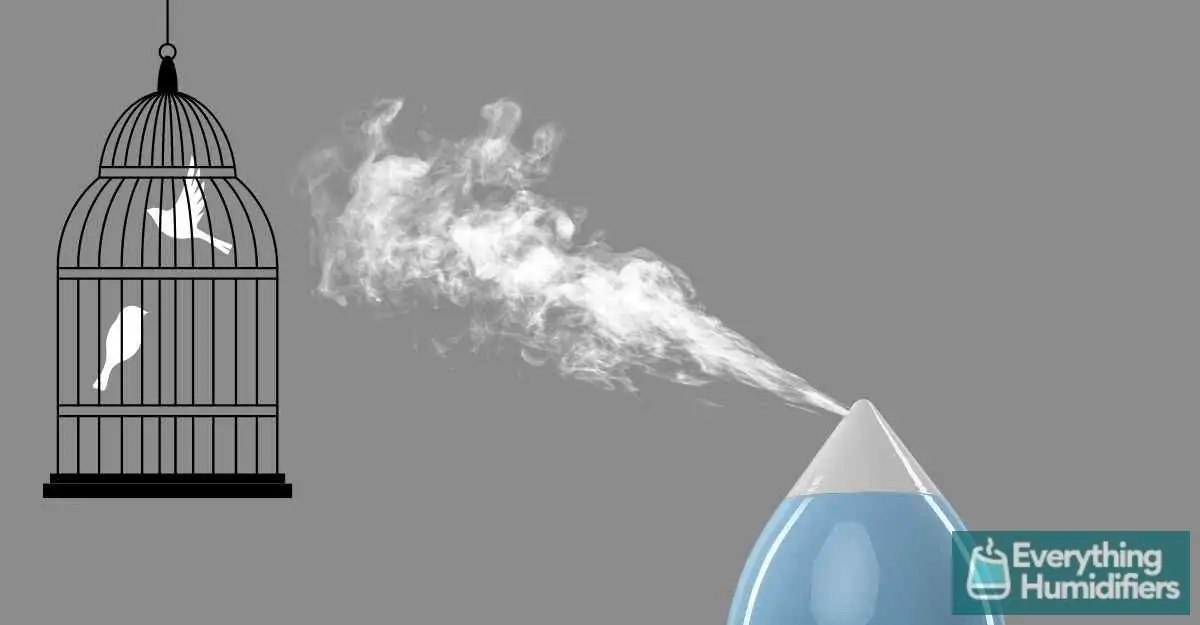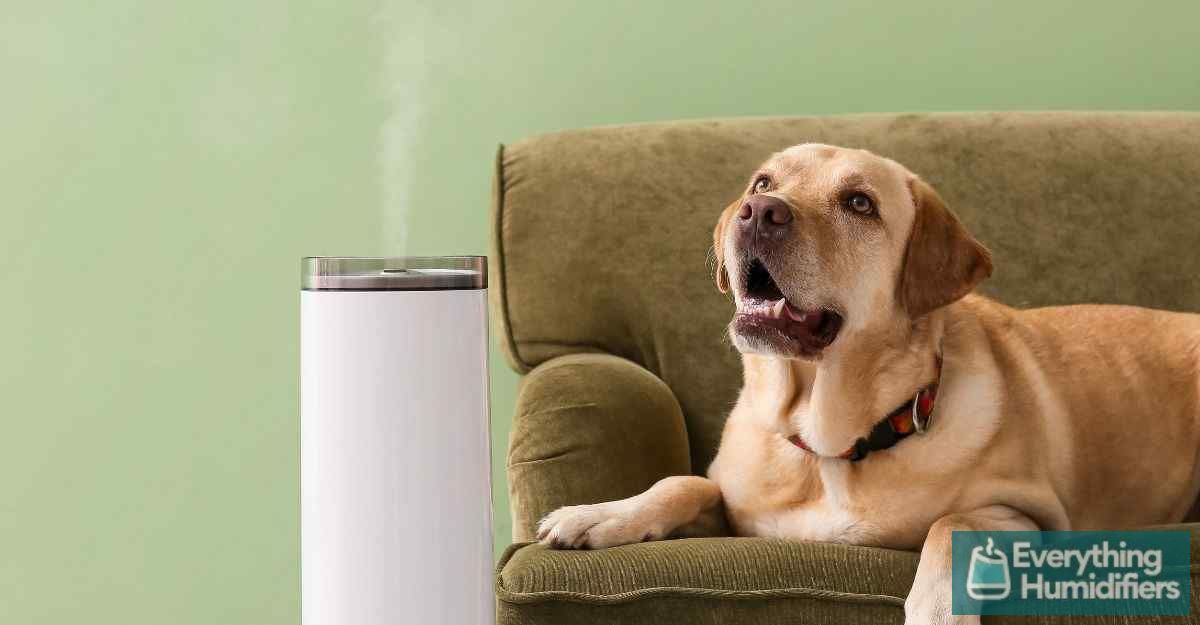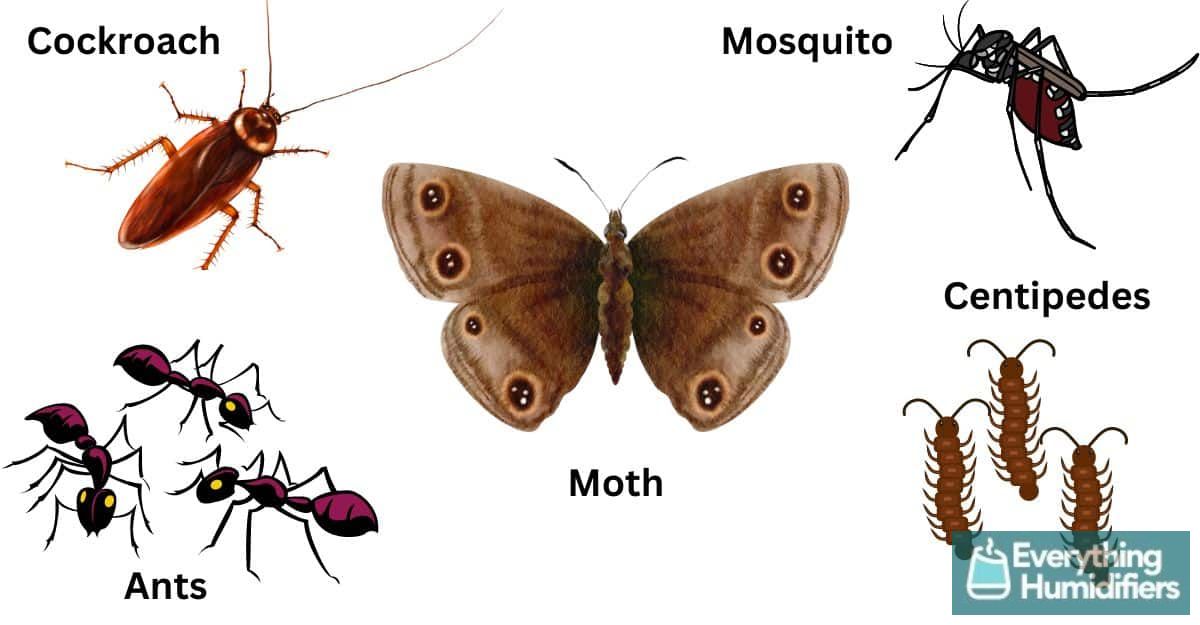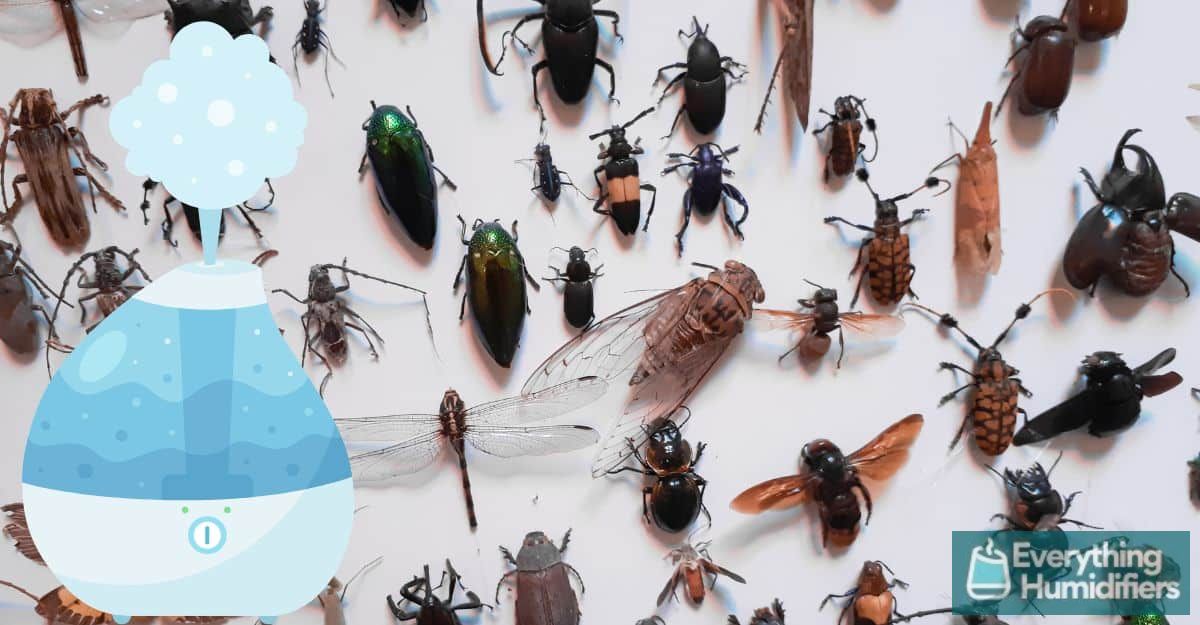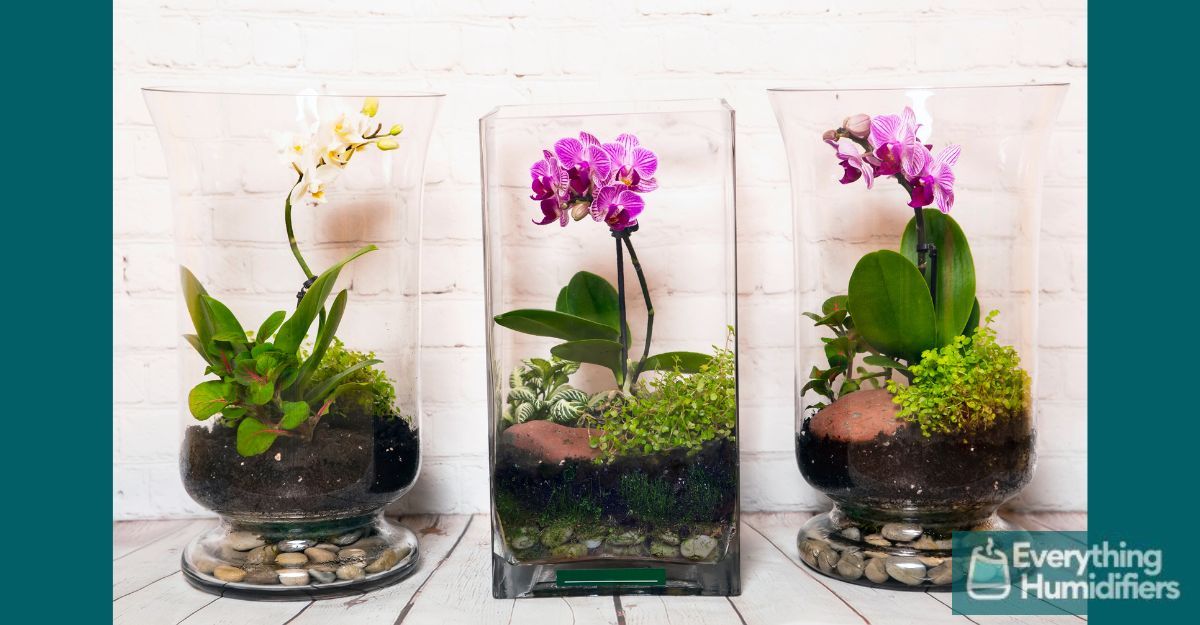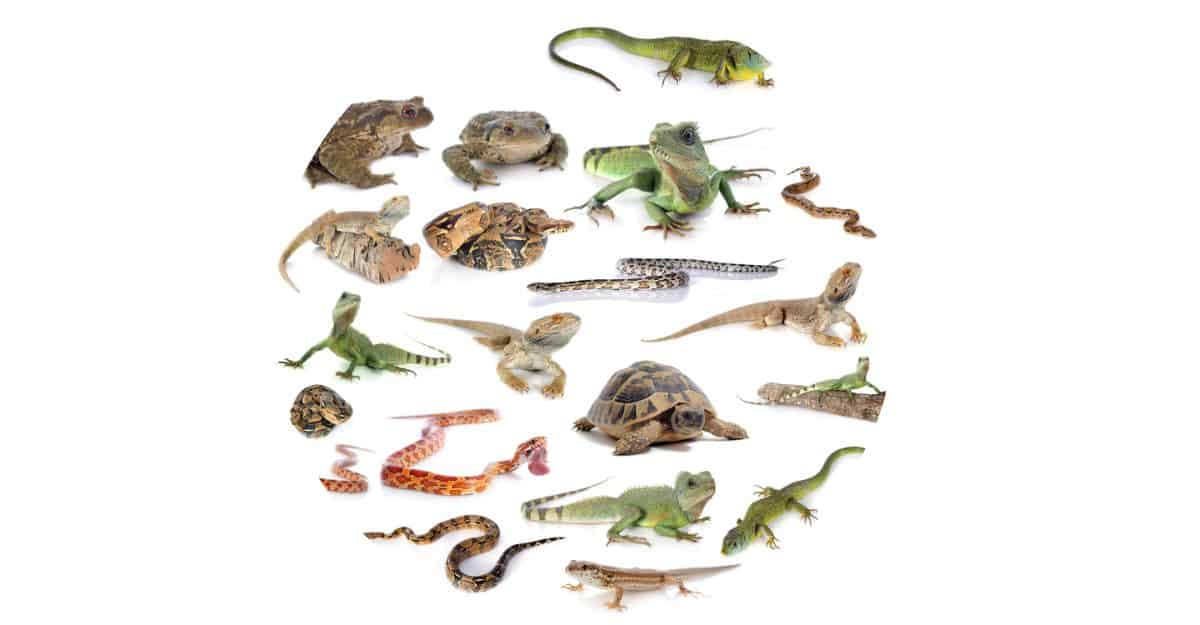Let’s hop into the world of frogs and frog pet owners. Yes, some people do keep frogs as pets! If you are one of them, you must know that humidity is vital in these croaky little amphibians’ lives.
Humidity is vital for pet frogs. Most frogs require high humidity levels of 50% – 80%. Amphibians need humidity to help breathe, absorb moisture through the skin, stay hydrated, shed, and reproduce. Humidity extremes will affect the health and well-being of your pet frogs.
In this article, we will explore whether frogs need a humidifier. Also, how to determine if your frog needs extra humidity. These concerns also affect other herptiles in general, including toads, newts, salamanders, lizards, snakes and turtles.
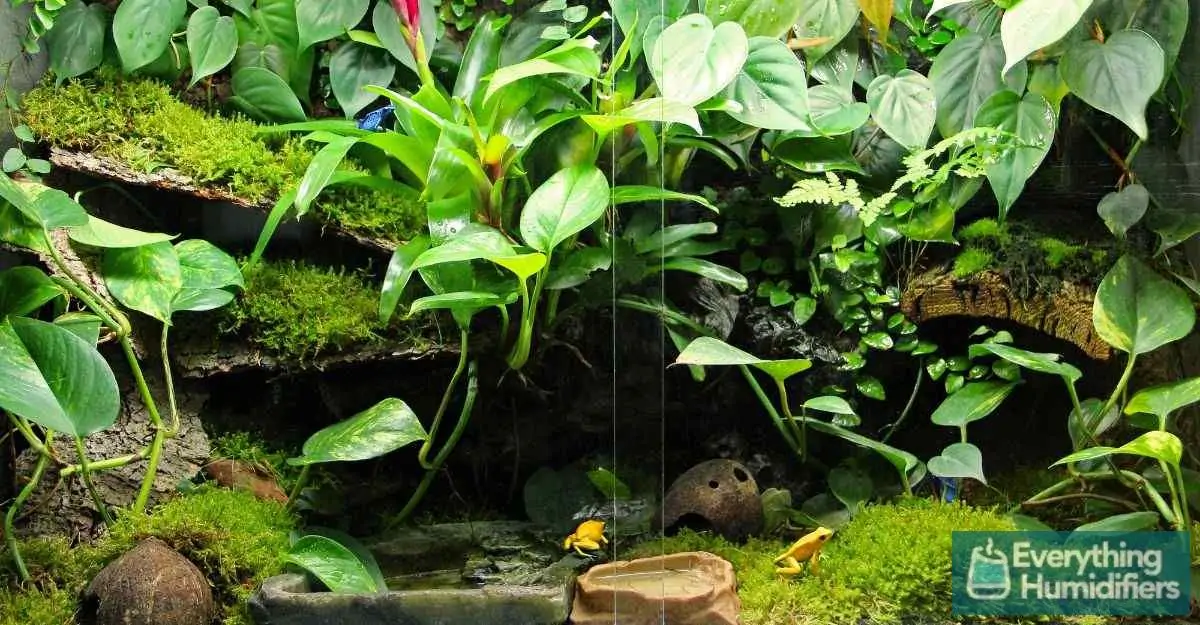
Why do frogs need humidity?
Frogs have a particular fondness for humidity. It is not just a matter of personal preference for them – it is a necessity.
Most frogs are found in regions with high humidity and wet conditions, such as rainforests, tropical forests, swamps, and wetlands.
Like most animals, they are adaptable to a degree. The closer we can replicate their original habitat, the more comfortable they will be. In turn, less complications for us to deal with.
For frogs to survive and thrive, humidity is essential. It has a significant impact on their existence in many ways:
Keeps skin hydrated: Frogs rely on moisture in the environment to keep their sensitive skin hydrated, preventing the skin from drying out and becoming susceptible to infections.
Disease prevention: Maintaining the proper humidity level in a frog’s environment is essential for its health and can help prevent various diseases and health problems.
Facilitates respiration: Frogs breathe through their skin and lungs, using a unique method that enables efficient gas exchange. Dry conditions make breathing difficult for frogs and can lead to respiratory problems.
Maintains body temperature: Humidity helps to maintain body temperature and regulate metabolism, ensuring optimal physiological functioning.
Reproduction: Moisture-rich habitats are essential for the development and survival of frog eggs and tadpoles, providing the ideal conditions for their growth and transformation.
Shedding: Many frog species regularly shed their skin to accommodate growth. Adequate humidity helps keep their skin moist and supple, making it easier to shed old skin.
Preventing congestion: If a frog’s environment is too dry, it can cause congestion and make them more susceptible to fungi and other health problems.
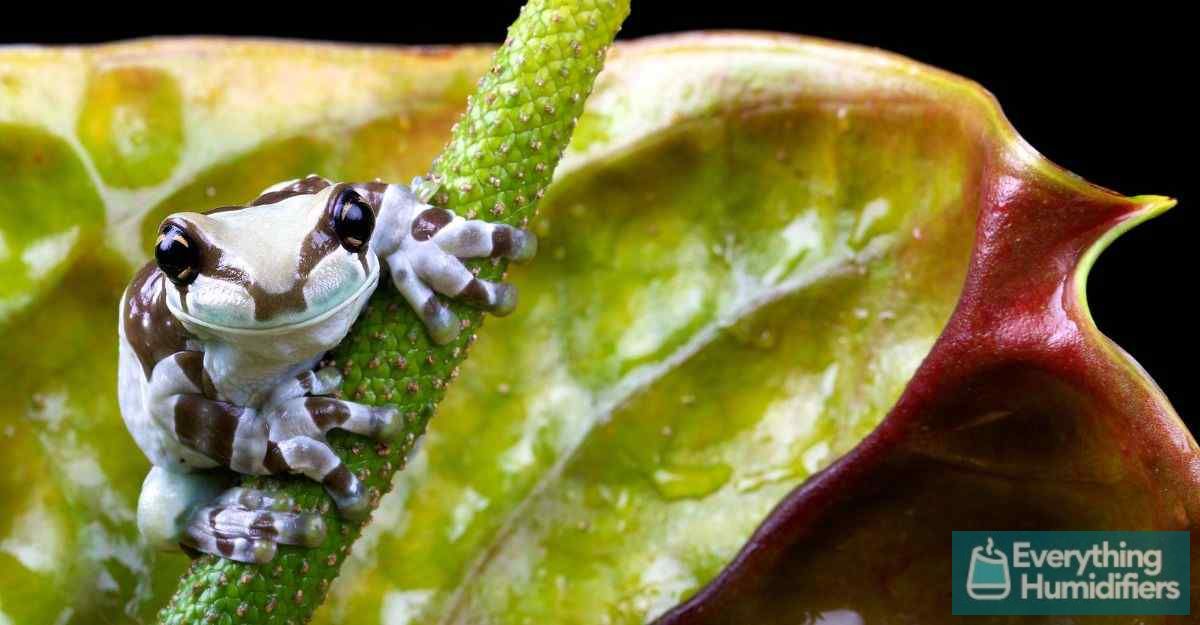
How do you know if your frog terrarium needs a humidifier?
If your humidity is too low, your pet frog/s will not be healthy and happy, can become ill, and even die.
Here are some vital signs to look for:
- Dry and flaky skin – A frog’s skin should be moist and smooth. If you notice that the skin appears dry, flaky, or has rough patches, it could be a sign of insufficient humidity.
- Difficulty shedding – Shedding is a natural process for frogs to replace their old skin. Observing stuck shed on their toes, limbs, or other body parts may indicate insufficient moisture in the enclosure.
- Reduced appetite or weight loss – Inadequate humidity can affect their ability to stay hydrated and regulate their metabolism, leading to a loss of appetite and subsequent weight loss.
- Respiratory Issues – If you notice signs of respiratory distress, such as increased breathing rate, wheezing, or labored breathing, it could indicate the enclosure’s humidity is too low.
- Lethargy – Frogs love to jump! You may have too low humidity if your pets are lethargic, spend time hiding, and exhibit reduced activity levels.
Researching the requirements for your species
It is a good idea to research the species of frog you want to keep as a pet.
Many factors influence the humidity, including their natural habitat, seasonal variations, and captive versus wild conditions.
It will help if you refer to scientific literature and reputable herpetological websites. Alternatively, consult with amphibian experts to get the information you need. To learn more about Herpetology, take a look at this Wikipedia article.
Here is a table that will give you some humidity guidelines for common pet frogs:
| Name (Family) | Humidity |
| Amazon Milk Frog (Hylidae) | 50 – 90% |
| American Bull Frog (Ranidae) | around 60% |
| Cuban Tree Frog (Hylidae) | 70 – 90% |
| Dart Frogs (Dendrobatidae) | 70 – 100% |
| European Tree Frog (Hylidae) | 50 – 70% |
| Glass Frog (Centrolenidae) | 50 – 70 % |
| Pac Man Frog (Ceratophryidae) | 60 – 80% |
| Red-eyed Tree Frog (Hylidae) | 70 – 80% |
| Tomato Frog (Microhylidae) | 65 -85% |
| White’s Tree Frog (Hylidae) | 60 – 90% |
It’s important to note that these are general guidelines, and some species may have specific humidity requirements within these ranges.
Monitoring the behavior and health of your frogs can also help determine if the humidity level is appropriate.
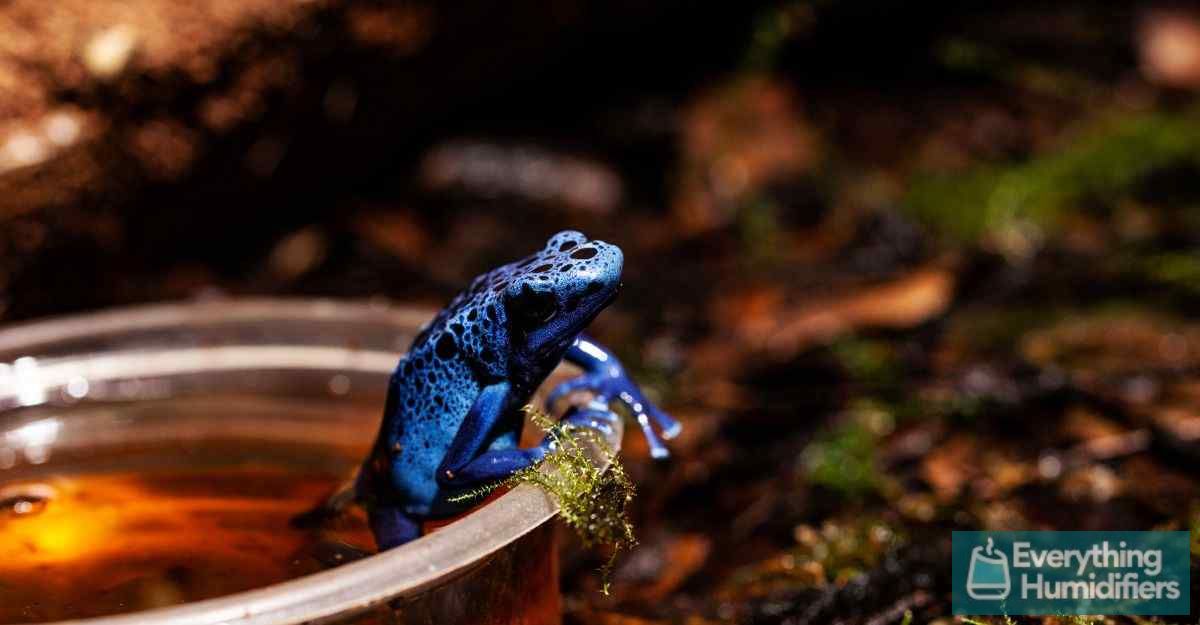
Creating a frog-friendly environment
There are several methods you can use to ensure adequate humidity in your frog enclosure:
Water features
Incorporating access to water, like a shallow pool, water dish, pond, or waterfall in the frog terrarium, can naturally increase humidity.
As the water evaporates, it adds moisture to the air. Ensure the water is clean and free from harmful chemicals or contaminants.
Misting or fogging
Lightly misting the terrarium with clean water will help to create a humid environment. Use a spray bottle or a reptile misting system to evenly distribute moisture throughout the enclosure.
Live plants
Plants look attractive and add to the ambiance of your enclosure. They also help increase humidity as they release moisture through transpiration. Choose suitable species that can thrive in a terrarium.
Substrates
Moisture-retaining substrates, such as coconut fiber or sphagnum moss, can help increase humidity. These substrates can be misted or dampened to provide additional moisture to the enclosure.
Covering the enclosure
Covering a portion of the enclosure with a lid or plastic wrap can help trap moisture, thereby increasing humidity levels.
Install a humidifier
Utilizing a reptile-specific humidifier can help to control and maintain humidity levels. These devices emit fine mist or moisture into the air, creating a consistent and controlled humidity environment.
Monitor the humidity levels regularly when using a humidifier to ensure they are within the appropriate range for the frog species.
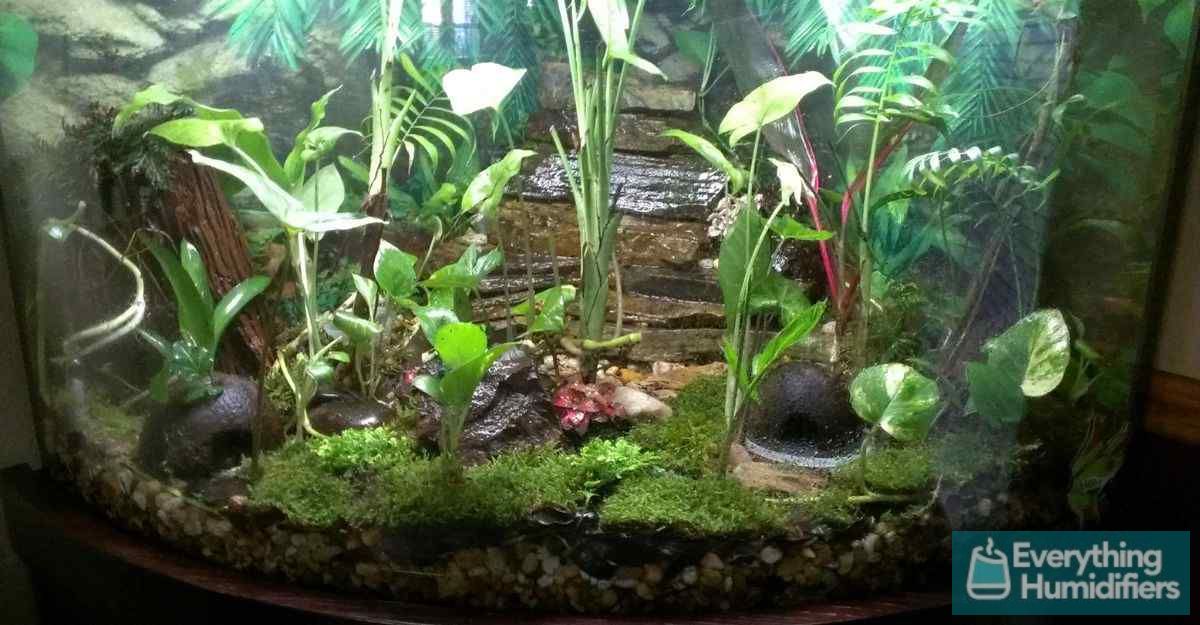
Maintaining your environment
Enclosures with humidity that is too high can become damp, muggy, and unhealthy because there is a risk of increased bacterial or fungal infections.
Here are some guidelines for maintaining the optimum frog environment
Use a hygrometer
The best way to accurately monitor the relative humidity of the terrarium air is by using a digital hygrometer regularly. This will allow you to make adjustments as required.
A hygrometer may be purchased at pet stores, home improvement stores, and internet vendors. Find out more about how hygrometers work.
Some hygrometers come with a remote sensor that can be placed inside the enclosure to measure the humidity level constantly.
Ensure proper ventilation
Adequate airflow is crucial to prevent excessive moisture buildup, stagnant air and mold growth. Ensure the enclosure has proper ventilation for fresh air exchange, such as air vents or mesh panels.
Cleaning
Regularly remove any soiled or damp substrate to prevent excess moisture accumulation. Spot-clean the enclosure by removing mold or mildew, feces, dead plants, and uneaten food. Dry the cover of the terrarium if moisture has accumulated inside it.
Monitor temperature, heating and lighting
Along with humidity, temperature, lighting and heating also play a part in maintaining a frog-friendly ecosystem.
Measure soil humidity
Some frog owners measure humidity at the soil’s surface. This is because the humidity level at the soil’s surface is more critical for the frog’s health than the humidity level a few inches above the ground.
Observe the frog’s behavior
Observing the frog’s behavior is another way to determine if the humidity level is appropriate. If the frog spends more time in the water than usual or shows signs of dehydration, the humidity level may need to be adjusted.
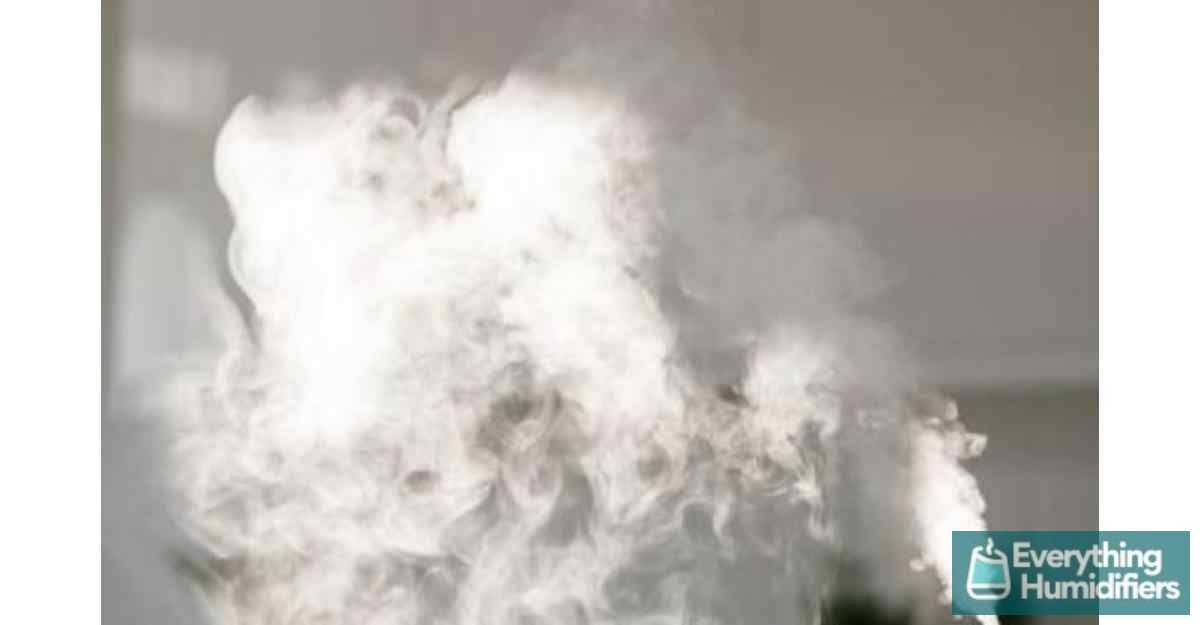
Is a Humidifier Safe for Frogs?
The answer is yes but with some precautions.
A humidifier can be a great way to maintain the required humidity level in your frog’s enclosure. Still, you must ensure you are using the correct type of humidifier and following the proper guidelines.
Here are some tips to ensure the safe use of a humidifier for your pet frogs:
• Use a cool-mist humidifier instead of a warm-mist one. Warm-mist humidifiers can produce hot steam that can burn your frog or overheat the enclosure.
• To stop mold and germs from growing, clean the humidifier often. Use distilled water instead of tap water to avoid the buildup of minerals.
• Place the humidifier away from the frog’s enclosure to prevent the water from spilling into the enclosure and causing flooding.
How Humidifiers work and their uses covers more information about humidifiers in general.
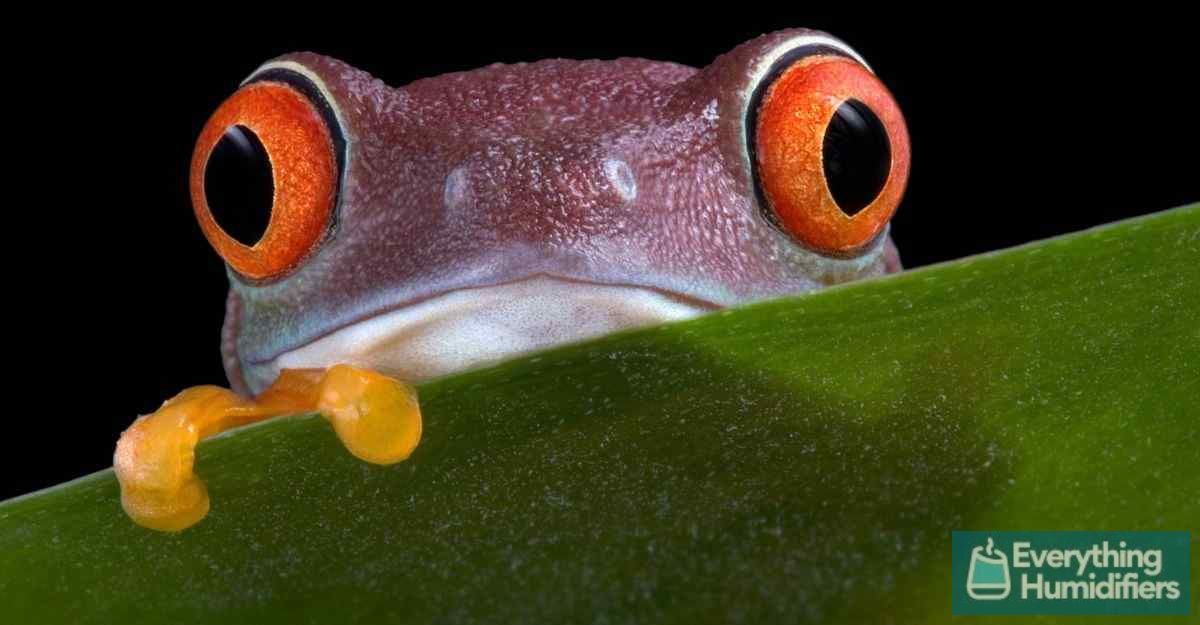
Frequently Asked Questions – Do Frogs need a Humidifier?
Which types of frogs need a humid environment?
Most tree frogs, such as green and white tree frogs, require a humid environment to thrive. Providing them with the proper humidity level in their terrarium is essential.
What is the ideal humidity level for frogs?
The ideal humidity level for frogs varies depending on the species. However, a general guideline is maintaining a 50% to 70% humidity level in the frog’s terrarium.
Can I use a humidifier to increase the humidity in my frog’s enclosure?
Yes, you can use a humidifier to increase the humidity in your frog’s enclosure. However, keep track of your humidity carefully to avoid exceeding the required range.
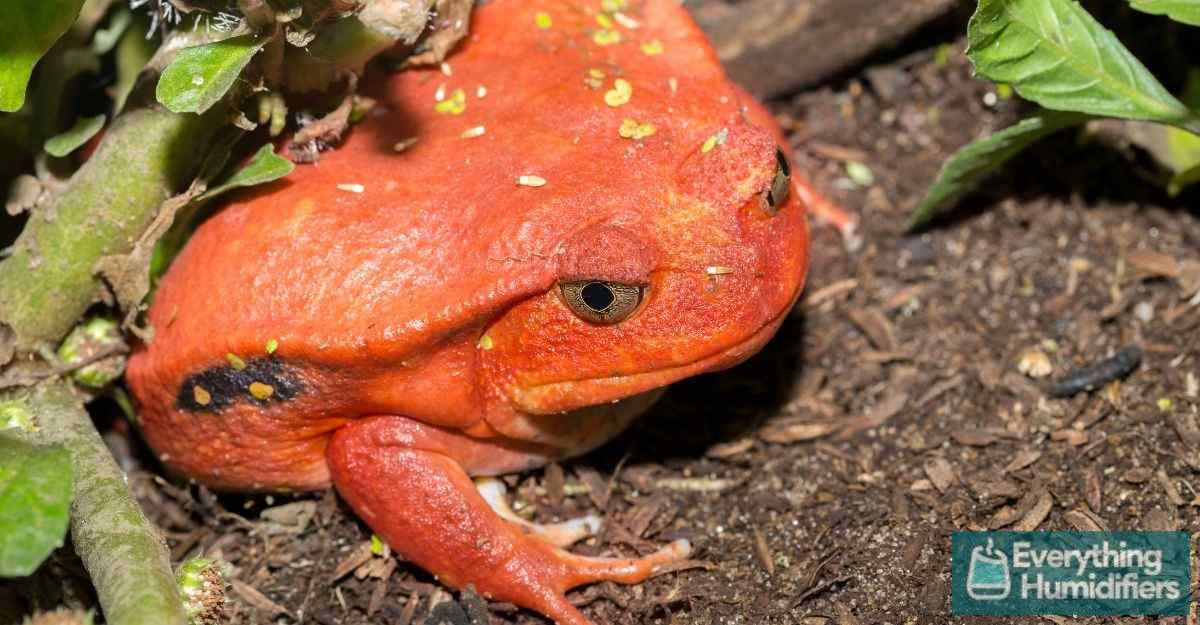
How often should I run the humidifier for my frog?
The humidity levels in your frog’s environment will determine how long you need to operate the humidifier. For consistency, a humidifier with automatic settings will cycle on and off as required once the chosen humidity is reached.
Can’t I just mist my frog’s habitat instead of using a humidifier?
Misting your frog’s habitat can temporarily relieve low humidity, but it’s not a long-term solution. A humidifier can maintain consistent humidity levels and prevent stress on your frog’s respiratory system.
Can frogs be affected by too much humidity in their terrarium?
Yes, too much humidity can also be harmful to frogs. It may produce a moist atmosphere that encourages the development of bacteria and fungi, resulting in several health problems for the frogs.
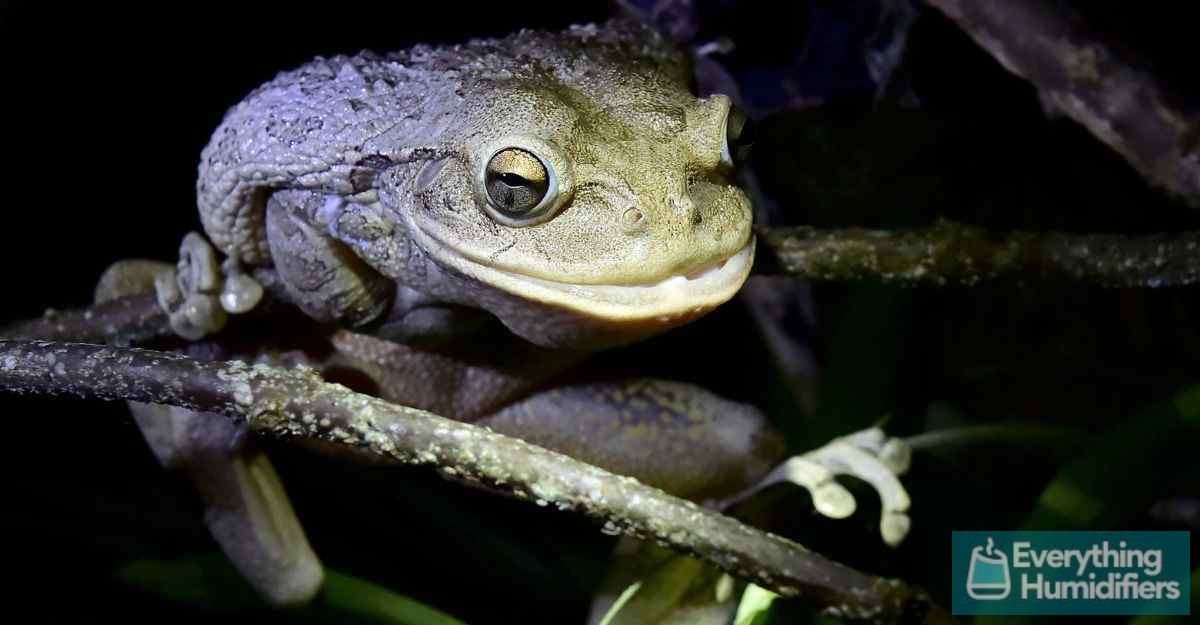
Summary – Do frogs need a humidifier?
As I researched whether frogs need a humidifier, I found that it depends on the frog species and their environment. While some frogs require high humidity levels to thrive, others do not.
Before selecting whether to use a humidifier, research the particular requirements of the species of frog you have.
Including a humidifier might help you maintain the ideal climate if your frog does need high humidity. Regularly check to ensure the moisture is not too high or too low, which might affect your frog’s health.
In addition to using a humidifier, there are other methods to increase humidity levels in your frog’s enclosure. These include misting the terrarium with water, using a substrate that holds moisture, and providing a water source for your frog to soak in.
Although not all frogs require a humidifier, it may be a helpful tool for preserving the ideal climate for those that do.
As a frog owner, you can join online forums, social media groups, or local herpetological societies to meet with people who also love these unusual pets. Your local pet store can be a great place to find out if there are experts in your area.
